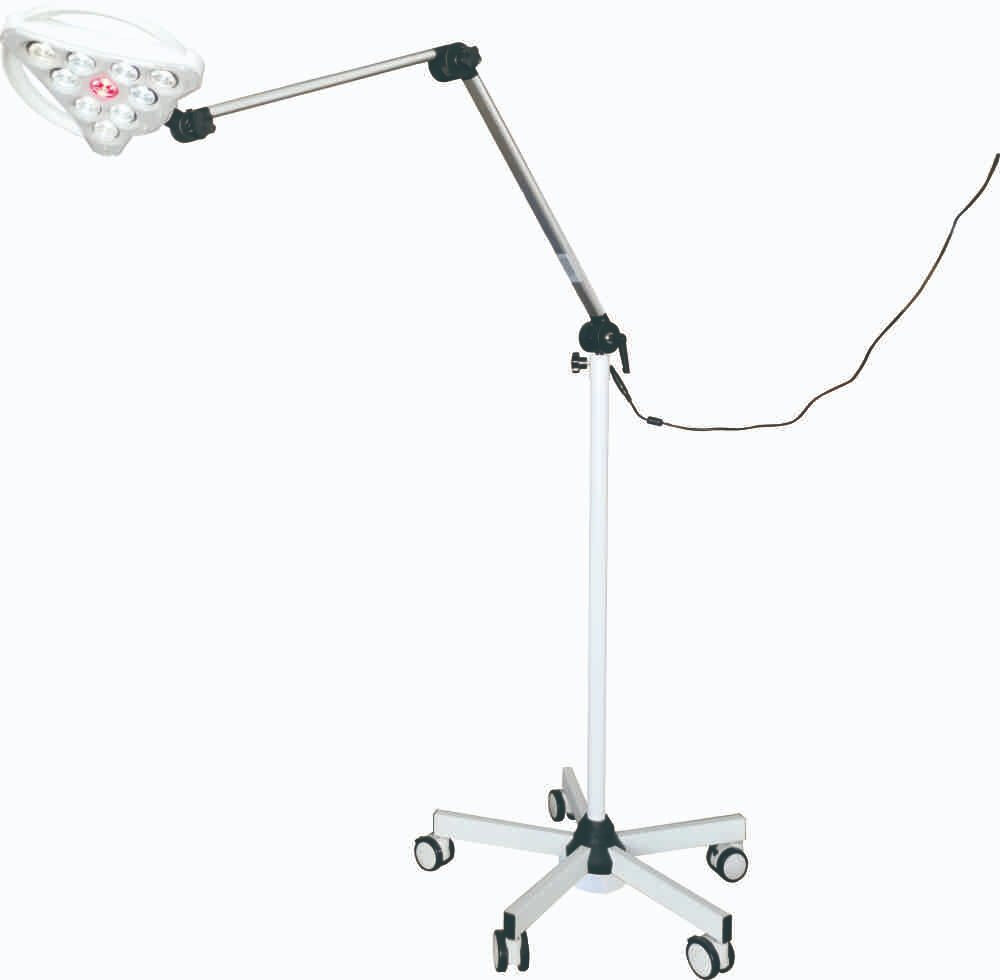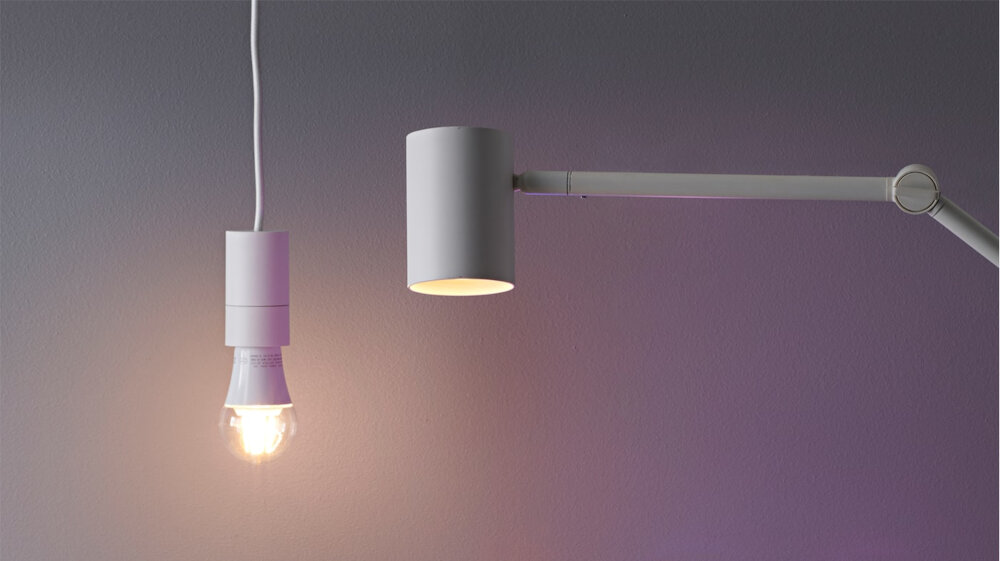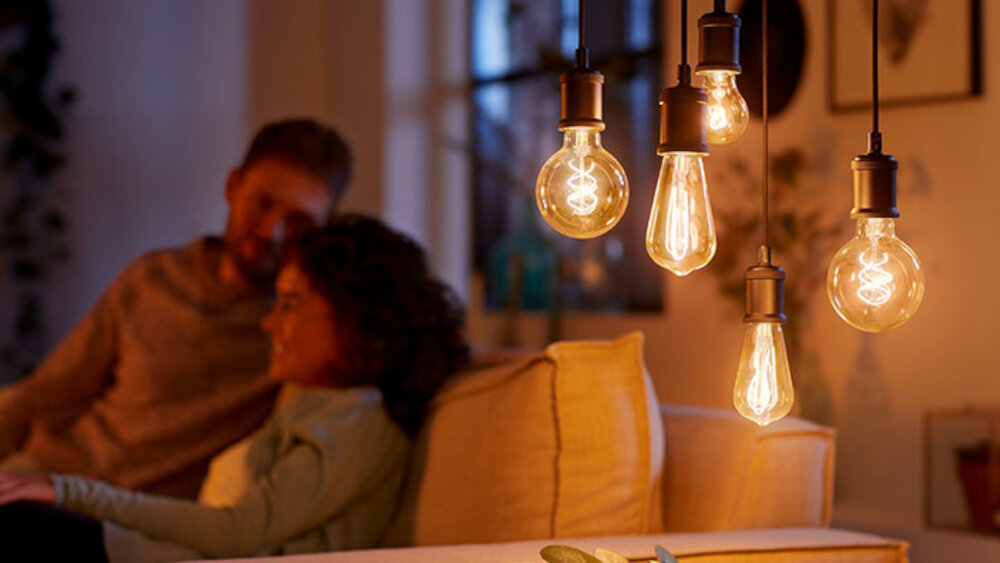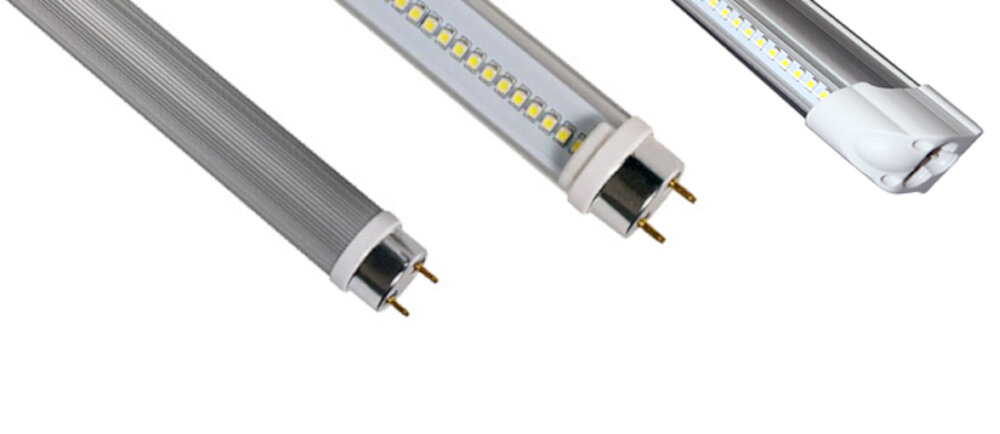The Science of Sleep: Why Choosing the Right LED Light Color Matters

Sleep is one of the essential aspects of human life, and it is crucial to maintain a healthy lifestyle. It is a vital process that helps in the restoration of the body and mind. Lack of adequate sleep can lead to various health issues, including obesity, depression, and heart diseases. Therefore, it is essential to understand the science of sleep, the factors influencing sleep, and the ways to improve it. One of the primary factors that have a significant impact on sleep is light. While we all know that light affects our sleep quality, very few people understand the science behind it. In particular, LED light color plays an important role in determining the quality of sleep. In this article, we will explore the science of sleep and how choosing the right LED light color can improve the quality of your sleep. Recent research has shown that light plays a crucial role in regulating our sleep-wake cycle. The human body is designed to sleep in darkness and wake up in the light. However, with the advent of modern technology, we are exposed to a variety of artificial light sources that can disrupt our sleep patterns. LED lights, in particular, emit a significant amount of blue light, which can interfere with the production of melatonin, a hormone that regulates our sleep-wake cycle. This interference can lead to difficulty falling asleep, staying asleep, and waking up feeling tired and groggy. Therefore, it is essential to understand the science of sleep and the impact of LED light color on our sleep quality.
Sleep cycles refer to the different stages of sleep that a person goes through during a typical night’s rest. There are four stages of sleep, and each stage is characterized by different brain activity, breathing patterns, and body movements. The first stage is a light sleep where the body is preparing to enter deeper sleep. The second stage is a slightly deeper sleep, while the third and fourth stages are the deepest and most restorative phases of sleep. It is during these deeper stages that the body repairs and regenerates tissues, strengthens the immune system, and consolidates memories. Quality sleep is essential for overall health and well-being, and lack of it can lead to a variety of health problems, including depression, anxiety, and obesity. Therefore, it is crucial to ensure that the sleep environment is conducive to restful sleep, including choosing the right LED light color.
The Role of Light in Sleep

Light plays a crucial role in regulating our sleep patterns. The human body is designed to operate on a 24-hour circadian rhythm, which is influenced by the amount and type of light we are exposed to. Light helps to regulate the production of melatonin, a hormone that controls our sleep-wake cycle. Exposure to bright light during the day helps to keep us alert and awake, while exposure to dim light or darkness at night promotes the production of melatonin and helps us to sleep. However, exposure to artificial light, particularly blue light emitted by electronic devices, can disrupt our circadian rhythm and interfere with the quality of our sleep. Therefore, it is important to choose the right LED light color for your environment to ensure a good night’s sleep. The importance of light in sleep is evident in its impact on our mood, behavior, and health. Research has shown that exposure to bright, blue-enriched light during the day can improve mood, alertness, and cognitive performance. On the other hand, exposure to dim light or darkness at night promotes relaxation and helps us to fall asleep faster. Choosing the right LED light color can help to regulate our sleep patterns and improve the quality of our sleep. Warm, amber-colored LED lights are ideal for use in the evening as they promote relaxation and help to prepare the body for sleep, while cooler blue and white LED lights are best for daytime use as they promote alertness and enhance cognitive function. By choosing the right LED light color for your environment, you can optimize your sleep and improve your overall health and well-being.
The human body’s internal clock, also known as the circadian rhythm, is regulated by the suprachiasmatic nucleus (SCN) located in the brain. This rhythm is responsible for regulating sleep-wake cycles, hormone production, and metabolism. Light is a crucial factor that affects the circadian rhythm. The body’s internal clock is synchronized with the 24-hour day through exposure to natural light. Light, particularly blue light, suppresses the production of melatonin, a hormone that promotes sleepiness, and increases alertness. Exposure to blue light in the morning helps reset the body’s internal clock, promoting wakefulness and alertness during the day. However, exposure to blue light at night can disrupt the circadian rhythm and interfere with the quality and duration of sleep. Therefore, it is essential to choose the right LED light color to support the body’s internal clock and promote healthy sleep patterns.
Light has a significant impact on our sleep quality, and different wavelengths of light can affect us differently. Blue light, with its short wavelength, is the most stimulating and can suppress the production of melatonin, the hormone that regulates our sleep-wake cycle. Exposure to blue light before bedtime can make it difficult to fall asleep and stay asleep. On the other hand, red and amber light have longer wavelengths, and they have less of an impact on melatonin production, making them more conducive to sleep. Dimmer, warmer light can also help signal to our bodies that it’s time to wind down and prepare for sleep. Choosing the right LED light color can make a significant difference in our sleep quality, and it’s essential to consider the color and intensity of light in our sleep environments.
The Impact of Blue Light on Sleep

Blue light is a type of light that is emitted by electronic devices like smartphones, tablets, and laptops. This type of light has been found to have a significant impact on sleep. Research studies have shown that exposure to blue light before bedtime can disturb the body’s natural sleep-wake cycle, also known as the circadian rhythm. This is because blue light suppresses the production of melatonin, a hormone that regulates sleep. When melatonin production is disrupted, it can be challenging to fall asleep and stay asleep. One way to reduce the impact of blue light on sleep is to limit exposure to electronic devices before bedtime. This can be done by turning off devices an hour or two before bedtime or using a blue light filter. Blue light filters are available for most electronic devices and can be installed easily. These filters work by reducing the amount of blue light that is emitted by the device, making it easier to fall asleep and stay asleep. By reducing exposure to blue light, individuals can improve the quality of their sleep, which can lead to better health and overall well-being.
Blue light is a type of light that is emitted by electronic devices, such as smartphones, laptops, and televisions. It has a short wavelength and high energy, which makes it particularly effective at stimulating the brain and suppressing the secretion of melatonin, a hormone that regulates the sleep-wake cycle. Exposure to blue light at night can therefore disrupt the body’s natural circadian rhythm and make it difficult to fall asleep or stay asleep. This can result in fatigue, irritability, and decreased cognitive function the next day. To avoid the negative effects of blue light on sleep, it is important to limit exposure to electronic devices before bedtime and to choose LED lights that emit warmer colors, such as red, orange, or yellow.
The prevalence of blue light in LED lights and electronic devices has become a growing concern in recent years due to its potential negative impact on our sleep. Blue light has been shown to suppress the production of melatonin, a hormone that regulates our sleep-wake cycle. This can lead to difficulty falling and staying asleep, which can have a range of negative effects on our physical and mental health. The use of blue light-emitting electronic devices, such as smartphones and tablets, before bedtime has also been linked to disrupted sleep patterns. As a result, many manufacturers are now offering \warm\ or \soft\ white LED lights that emit less blue light, which may be a better option for those looking to improve their sleep quality.
Studies have shown that exposure to blue light, particularly in the evening hours, can have a negative impact on sleep quality. Blue light is found in many electronic devices such as smartphones, tablets, and laptops, as well as LED light bulbs. This type of light can suppress the production of melatonin, a hormone that plays a key role in regulating sleep-wake cycles. As a result, exposure to blue light before bed can make it more difficult to fall asleep and can lead to disrupted sleep throughout the night. However, the good news is that there are ways to minimize the impact of blue light on sleep, such as using warm-colored LED lights in the evening and limiting screen time before bedtime.
The Benefits of Warm LED Lights

Warm LED lights are quickly becoming the preferred choice for lighting up homes and offices. One of the primary benefits of these lights is that they emit a warm, yellowish light that is similar to the light produced by traditional incandescent bulbs. This type of light is not only aesthetically pleasing but also has a calming effect on the mind and body. The warm light helps to create a relaxing and comfortable environment in any room, making it the perfect choice for bedrooms, living rooms, and other areas where people spend a lot of time. Additionally, warm LED lights can improve sleep quality by reducing the production of melatonin, which is the hormone responsible for regulating sleep cycles. This means that people who use warm LED lights in their homes can enjoy better quality sleep and wake up feeling refreshed and energized. Another benefit of warm LED lights is that they are highly energy-efficient. These lights consume less energy than traditional incandescent bulbs, which means that they are more cost-effective to operate. In addition, warm LED lights have a longer lifespan than incandescent bulbs, which reduces the need for frequent replacements. This makes them an excellent long-term investment for any homeowner or business owner who wants to save money on energy bills and reduce their carbon footprint. Overall, the benefits of warm LED lights are numerous, and they are quickly becoming the go-to lighting choice for people who want to create a comfortable, relaxing, and energy-efficient environment in their homes or offices.
Warm LED lights are a type of LED light that emits a yellowish-orange glow, similar to traditional incandescent light bulbs. These lights have a color temperature of 2700K or lower, which makes them ideal for use in the evening and nighttime. Research has shown that exposure to warm LED lights before bed can help improve sleep quality. This is because warm light has a calming effect on the body, signaling to the brain that it’s time to wind down and prepare for sleep. Additionally, warm LED lights don’t emit blue light, which is known to suppress melatonin production and disrupt sleep. Therefore, choosing warm LED lights for your bedroom can help create a relaxing and sleep-friendly environment, leading to more restful nights and better overall health.
When it comes to LED lights, the color temperature can play a critical role in our sleep patterns. Warm lights, typically around 2700-3000K, emit a yellowish-orange hue that mimics the natural light of a sunset. This type of light can promote relaxation and calmness, making it an excellent choice for bedrooms and nighttime use. On the other hand, cool lights, typically around 5000-6500K, emit a bluish-white hue that mimics the natural light of a sunny day. This type of light can promote alertness and productivity, making it a better choice for workspaces and daytime use. It’s essential to choose the right color temperature for your lighting needs to ensure that your circadian rhythm is not disrupted, which can lead to sleep disturbances and other health issues.
Studies have shown that warm light can positively impact sleep quality. This is because warm light, typically defined as having a color temperature of 2700K-3000K, mimics the natural light of the sun during sunset and has been found to promote relaxation and a sense of calmness. Additionally, warm light has been shown to suppress the production of melatonin, which is responsible for regulating sleep patterns, less than cool light. This makes it a better choice for use in the evening and before bedtime. Choosing warm light can therefore help improve the quality of sleep, which in turn can have a positive impact on overall health and well-being.
Choosing the Right LED Light Color for Better Sleep

The right LED light color is crucial for a better sleep. It has been scientifically proven that light exposure before bedtime can affect the quality of sleep. The blue light emitted by electronic devices and LED lights inhibits the production of melatonin, a hormone responsible for regulating sleep. Exposure to blue light can cause a delay in the onset of sleep, resulting in a poor quality of sleep. However, not all LED lights are created equal. There are different colors of LED lights that can help improve sleep quality. Warm white LED lights with a color temperature of 2700K to 3000K are recommended for use in bedrooms. These lights provide a relaxing and soothing ambiance that can improve sleep quality. On the other hand, cool white LED lights with a color temperature of 4000K to 5000K should be avoided in the bedroom. These lights mimic daylight and can interfere with the body’s natural circadian rhythm, making it difficult to fall asleep. It is important to note that exposure to the right LED light color is not the only factor that can affect sleep quality. Other factors such as noise, temperature, and stress can also affect the quality of sleep. Therefore, it is recommended to create a sleep-friendly environment by minimizing noise, maintaining a comfortable temperature, and reducing stress before bedtime. By incorporating these factors into your sleep routine, you can improve the quality of your sleep and wake up feeling refreshed and energized.
When it comes to choosing the right LED light color for better sleep, there are a few tips to keep in mind. Firstly, it is important to understand that blue light can disrupt our circadian rhythm and suppress the production of melatonin, the hormone that regulates sleep. Therefore, it is recommended to opt for warmer colors such as red, yellow or orange, as they emit longer wavelengths that are less likely to interfere with our natural sleep cycle. Additionally, it is important to consider the brightness of the light, as a dimmer setting can help create a more relaxing and calming atmosphere conducive to sleep. Overall, paying attention to the color and intensity of your LED lights can make a significant difference in the quality of your sleep and overall well-being.
When it comes to LED lights, there are several options available in the market. The most commonly used LED lights are cool white, warm white, and blue light. Cool white LED lights emit a high amount of blue light, making them ideal for task-oriented spaces like kitchens and offices. Warm white LED lights give off a yellowish glow, creating a cozy atmosphere perfect for living rooms and bedrooms. Blue LED lights, on the other hand, can have a negative impact on sleep as they suppress melatonin production, which is responsible for regulating sleep-wake cycles. Therefore, it is important to choose the right LED light color for different areas of the home to promote healthy sleep habits.
Nowadays, several brands and products are offering LED lights designed specifically for sleep quality. These lights emit a warm and soothing light that helps in relaxing the mind and body, leading to a better sleep experience. One such brand is Philips Hue, which offers a range of smart bulbs that can be controlled through a mobile app and can change color temperature from warm to cool. Another brand, Lighting Science, has developed a GoodNight® LED bulb that emits a warm light that promotes the production of melatonin, a hormone that regulates sleep. Additionally, Soraa Radiant LED bulbs offer a natural, warm light that mimics the color of the sun, promoting healthy circadian rhythms. These products and brands show that choosing the right LED light color can have a significant impact on sleep quality.
Getting quality sleep is essential to maintain overall health and well-being. However, the quality of sleep can be affected by various factors, including environmental factors such as lighting. LED lights, in particular, have been found to have a significant impact on sleep quality due to their emission of blue light, which suppresses the production of melatonin, a hormone that regulates sleep. This disruption of the body’s natural circadian rhythm can result in difficulty falling asleep, staying asleep, and feeling rested upon waking. Therefore, it is crucial to choose the right LED light color, such as warm or amber lights, to promote a healthy sleep environment and ensure a good night’s rest.
In conclusion, selecting the appropriate LED light color is a vital aspect of achieving optimal sleep quality. The science behind how light influences our circadian rhythms is complex, but the evidence is clear: blue light suppresses melatonin production and disrupts our natural sleep-wake cycles. By choosing warmer, reddish hues in our bedroom lighting, we can promote relaxation and encourage the release of sleep-inducing hormones. Additionally, using dimmer lights in the evening and avoiding electronic devices before bed can further support healthy sleep habits. Prioritizing our sleep hygiene through thoughtful lighting choices can lead to improved rest, mood, and overall well-being.
Conclusion

In conclusion, the science of sleep is a crucial aspect of our overall health and well-being, and choosing the right LED light color can have a significant impact on the quality of our sleep. Studies have shown that blue light, which is emitted by many electronic devices, can disrupt our natural sleep pattern and make it difficult to fall asleep. By choosing warmer, more calming colors for our LED lights, we can create a more relaxing environment that promotes healthy sleep habits. It’s important to prioritize our sleep and take steps to create a peaceful and restful atmosphere in our homes. By paying attention to the science of sleep and making informed choices about our lighting, we can improve our overall health and quality of life.




